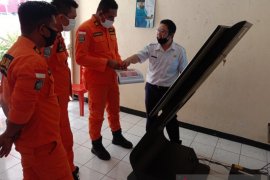"That is the formula if you want zero victims. Early warning is a technical aspect that constantly requires technological innovation; it is in the upstream part of the system coordinated by the Meteorology, Climatology, and Geophysics Agency," BMKG head Dwikorita Karnawati said in a written statement received here on Saturday.
Meanwhile, immediate response is a socio-cultural aspect that is managed by the National Disaster Mitigation Agency. However, the regional government is the most important agency for encouraging early action.
"Both aspects, of upstream–downstream, or technical–cultural, must be integrated, connected pervasively, continuously, so that cases of disasters with no casualties can actually come true," she said.
Indonesia faces several complexities and uncertainties regarding disasters and climate. Therefore, the zero-victim goal must serve as a reference when devising measures to deal with the threat of natural disasters.
Preparedness must not only be instilled at the government level, but must also be rooted in all citizens, she said. This is not an exaggeration, given the fact that Indonesia is prone to disasters due to its location in the Pacific Ring of Fire and the Mediterranean Belt, she said.
It is even situated in the collision zone of active tectonic plates. All those factors put Indonesia at risk of earthquakes, tsunamis, landslides, and volcanic eruptions.
Related news: 23 national standards developed to manage disasters in 11 years: BSN
"Not to mention the fact that Indonesia is a maritime continental country located in the tropical area, so it is prone to storms, typhoons, and tropical cyclones that often occur in the places on the Equator, especially those close to the Pacific Ocean. And, Indonesia is a country with heavy rainfall," she added.
There are many disaster threats facing the nation, thus their mitigation must be conducted in a structured, systematic, and extensive manner. Education pertaining to disaster mitigation for the public must also be improved.
This has become a collective task, Karnawati said. Disasters hit suddenly, and the state of preparedness is always disregarded, she opined.
She also spoke about the domestic content level in the development of the BMKG’s early warning system.
So far, the agency has produced several main operational equipments for its needs. These products have been tested for their ability and quality, and patents for them have also been registered.
She said that the Automated Weather Observing System (AWOS) is one such example of BMKG technology, which was once installed on the third runway of Soekarno Hatta Airport and the Yogyakarta International Airport.
AWOS was equipped with several sensors, such as temperature and humidity sensors, pressure sensors, rainfall sensors, wind direction, and speed sensors, and solar radiation sensors.
The agency also produced an intensity meter to detect tremors in certain equipments due to earthquakes, though it did not gauge the strength of quakes. Even though it was made by the agency, it has remained in good condition, and it has always recorded precise and accurate data since the day it has been installed, she added.
Related news: Hosting GPDRR reflects RI's improved resilience against disasters
Related news: BNPB reports 1,175 natural disasters struck during January 1-April 3
Translator: Indriani, Mecca Yumna
Editor: Suharto
Copyright © ANTARA 2022












